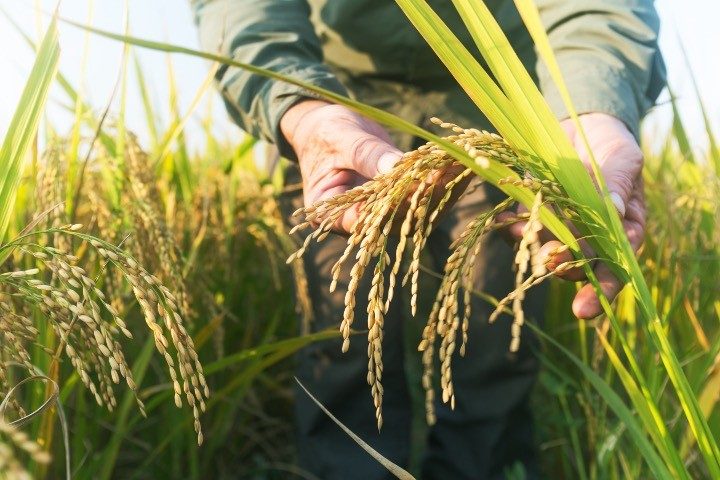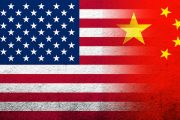
SINGAPORE — Chinese President Xi Jinping hopes China can ramp up efforts to attain self-reliance in agricultural technology, exemplifying seed development and core equipment among areas to concentrate on, based on state media reports.
“It is necessary to keep an eye on the frontiers of the world’s agricultural science and technology,” Xinhua news agency cited Xi as saying at the central rural work conference held in Beijing Friday and Saturday.
Xi encouraged China’s agricultural sector to “vigorously improve” its science and technology with better innovation, and called on the sector to deal with challenges like the rate of conversion into commercial applications and a paucity of cooperation between research teams. He urged the sector to multiply grain output, enhance the quality of arable land, and obtain a turnaround in home-grown, high-yield seeds.
The communist leadership in Beijing declared two years ago that China’s seed industry was an Achilles’ heel in the food chain and that the nation had to leverage on science and technology to attain tangible and favorable results.
China has poured huge sums of money into basic agricultural research, yet the country has few large commercial companies investing in long-term research and development in order to introduce innovative solutions to the market.
China’s priorities and vows to guarantee a stable supply of primary food products are not entirely baseless. After all, the nation is on a spree to revitalize rural areas so as to tackle economic challenges and geopolitical matters that could disrupt the food supply chain. “Ensuring a stable and safe supply of grain and important agricultural products are of the utmost importance to establish an agricultural powerhouse,” Xi admitted.
In 2021, Xi declared China’s need to set up a “strategic baseline” to guarantee self-sufficiency in major commodities ranging from energy to soybeans. Beijing also mentioned that a secure supply of primary goods like agricultural products, minerals, and energy is one of five “significant theoretical and practical issues” to deal with Covid-19 and develop international relations. (The four other priorities are “common prosperity,” capital regulation, the lowering of major financial risks, and carbon neutrality.)
Xi’s top economic adviser, Liu He, emphasized in 2020 that China’s pursuit of self-reliance in key technologies is “imperative” to its new economic strategy, which places a heightened importance on domestic consumption.
“This is a critical juncture for the development of a big country’s economy,” Liu penned in an official guide to Beijing’s new development plan, pledging that the capital markets would back the movement for technological innovation.
Liu’s responsibilities as vice-premier cover the fields of science and technology, sectors that Beijing’s planners have deemed as essential in China’s competition with the United States.
He said that geopolitics and the Covid-19 situation have had huge ramifications on global production and value chains, prompting China to speed up changes to its growth strategy. However, he also acknowledged there were other factors influencing China’s situation, stating, “Many of the problems we are facing are medium to long-term, some are even unprecedented to us. In a sense, defusing challenges means opportunities.”
The linchpin to transforming China’s growth model into a “new development pattern” is removing any hindrance to economic activity, and that means an enhanced capacity for innovation, Liu asserted.
“That requires deepening reforms, expanding the open-door policy, fostering scientific and technological innovations, and upgrading the industrial structure,” he continued. “Accelerating the push for self-reliance in science and technology is imperative in both promoting domestic market circulation and projecting China to a dominant position in the global economy.”
Liu also added that it was key that the financial services sector aid the real economy and encourage innovation. “[We will] improve the policy on how financial services can facilitate innovation, let the capital markets play their role as a hub for fostering ‘quality circulation’ of technology, capital and the real economy, and raise the quality of fintech.”
He claimed that the development model that had powered China’s remarkable growth since the 1980s also unearthed the country’s susceptibility to and reliance on imported resources and export markets. Hence, he argued, a change to innovation-driven development is necessary to help China tide over these problems, as well as other issues due to changes in the domestic supply and demand structure, such as the split between production and consumption and foreign control of critical technology.
To attain its goal of self-reliance, Liu said China would boost its R&D capacity, enhance international collaboration, step up efforts to encourage research, and empower corporations more to propel innovation. “We should leverage the advantages of our domestic market to promote and scale up the commercial applications of new [home-grown] technologies,” he said, elaborating that fueling domestic demand would aid the recovery of the global economy.
In addition, Liu outlined other blueprints for transforming China’s growth into a “new development pattern,” including an emphasis on core cities and urban clusters, better income distribution, expanding the middle class, and “quality” development under the Belt and Road Initiative.
In one of his speeches, Xi acknowledged that “science and technology have never had such a deep influence over the country’s future and fate as they do today,” and summed up that China “needs to strengthen innovation as its No 1 growth driver more than ever.”
In October 2020, the central leadership unveiled a new five-year plan placing scientific and technological innovation at the crux of China’s modernization program to propel the country into one of the world’s most advanced countries by 2035. This plan also entrenched the significance of the so-called “dual circulation” strategy, which puts greater importance on domestic markets as a driver of growth while simultaneously hoping to go beyond cheap manufacturing in China’s trade relations with foreign countries.



